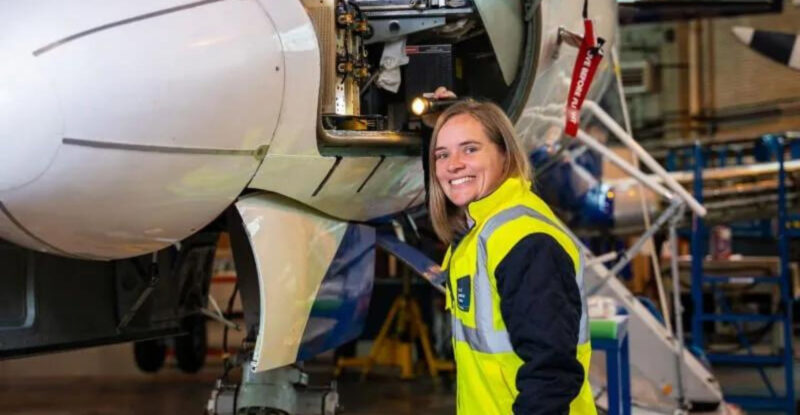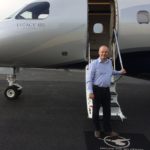 Still located on the Bedfordshire, UK-based airfield campus of Cranfield University, design, production, and maintenance organisation Cranfield Aerospace Solutions (CAeS) spun off from the university in 1997. With multiple CAA authorizations covering complex aircraft modification work in its portfolio, CAeS in 2019 launched Project Fresson, aimed at creating a certifiable hydrogen fuel cell conversion for the Britten-Norman Islander.
Still located on the Bedfordshire, UK-based airfield campus of Cranfield University, design, production, and maintenance organisation Cranfield Aerospace Solutions (CAeS) spun off from the university in 1997. With multiple CAA authorizations covering complex aircraft modification work in its portfolio, CAeS in 2019 launched Project Fresson, aimed at creating a certifiable hydrogen fuel cell conversion for the Britten-Norman Islander.
CAeS’ work has progressed, and on 28 February the UK CAA announced that CAeS, along with Exeter Airport Consortium and hydrogen-electric aircraft developer ZeroAvia, are the first companies selected for its so-called Hydrogen Challenge Sandbox, which will see the parties work closely with the regulator to increase readiness of industry and the regulator for hydrogen fuel.
CAeS’ principal mechanical design engineer Christine Holmes and her team are therefore at the leading edge of a step change in aircraft propulsion. “It’s exciting to be involved, to be part of a small group that’s moving aviation forward,” she says.
Her team is working to package the hydrogen fuel cell, electrical components, cooling equipment, pipework and cabling into the space occupied by the nacelle of the Islander’s traditional piston engine. “It’s really challenging,” Holmes confides, “and we’re working to ensure it meets regulatory approval too.”
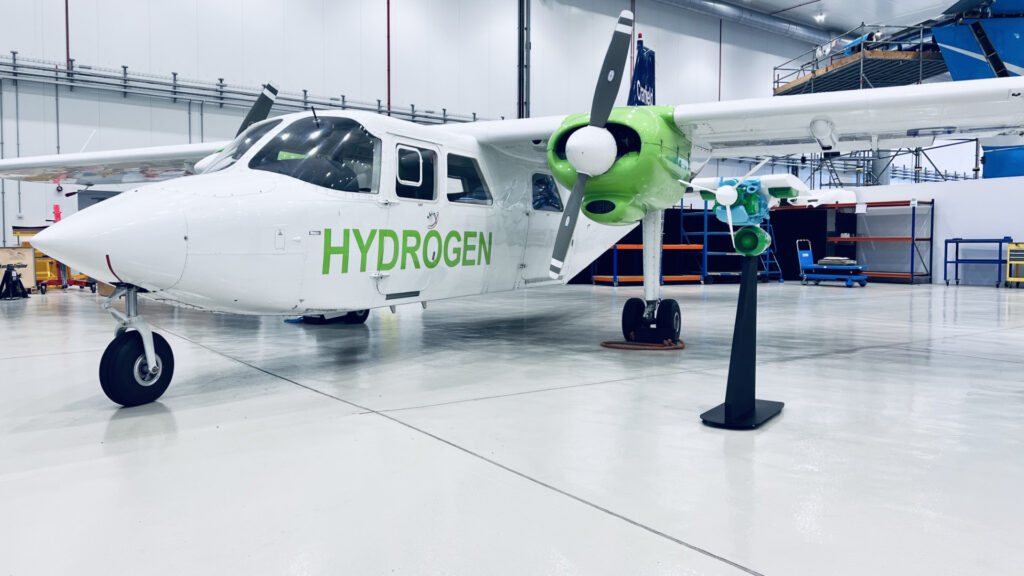
The Islander with a model of the hydrogen-electric propulsion system. Note the large cooling installation for the hydrogen fuel cell. Image: Cranfield Aerospace Solutions
CAeS intends to produce a hydrogen fuel cell system (HFCS) retrofittable under a supplemental type certificate to any suitable Islander — this in no experimental program or one-off technology demonstrator. Against its own aggressive schedule, the company expects to achieve certification in 2026 ahead of commercial operations commencing in 2027.
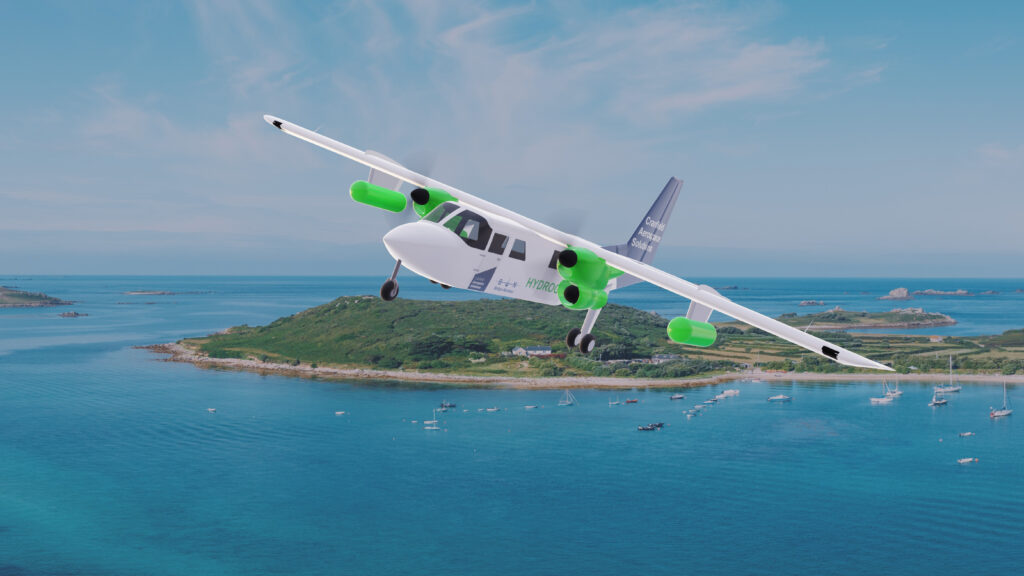
Project Fresson will produce a hydrogen fuel cell conversion applicable to suitable Islanders under supplemental type certification. Image: Cranfield Aerospace Solutions
Disarmingly humble, Holmes emphasizes that the HFCS is a team effort. “I look after a team of engineers, making sure they can do their work, that they have the information they need when they have queries or need support creating designs. We have a small team though, so I’m hands-on creating design work as well.”
The first Islander for conversion sits in the company’s hangar, just 5 minutes’ walk from the office. Holmes continues: “We also get involved with the hangar team, running design work past them to ensure it can be made and installed, that it’s sensible. They work on the aircraft every day and if they have a better idea we want their feedback.”
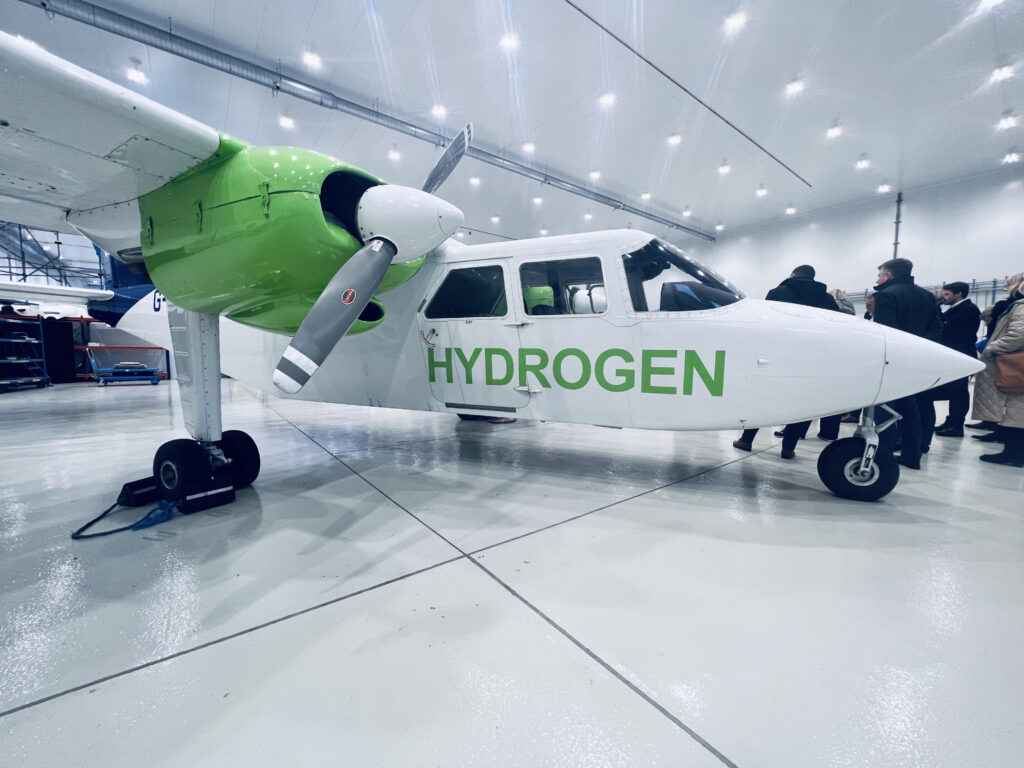
The Islander awaiting conversion in the CAeS hangar. The aircraft is a former movie star — James Bond ‘flew it’ in Spectre. Image: Cranfield Aerospace Solutions
Holmes joined CAeS in 2012, her engineering journey between university and aviation having been through motorsport. “I don’t think I ever consciously thought, ‘I want to be an engineer’, it just happened that way,” she recalls.
“My dad used to race when he was younger and then my older brother started. What he was doing I always wanted to do, so I started racing karts when I was seven. Later it was cars too. Dad encouraged me to learn how they worked and to do the maintenance myself. I’d always been inquisitive about how things worked; I was forever taking things apart. That led me into a motorsport engineering degree and the rest is history.”
Holmes seems not to realize the magnitude of her achievement. Asked to expand on that motorsport history she reveals: “I worked in different formulas and touring cars. In F1, I travelled with the test team, working with the drivers.”
Explaining that CAeS remains active in the wider field of aircraft modification, Holmes says she also worked with the Royal Air Force Battle of Britain Memorial Flight. “They were upgrading their radio equipment, and I surveyed all their Hurricanes and Spitfires to see how the equipment could be installed. That means I’ve sat in all of them, and few people can say that.
“My dad sometimes tells me I need to take a step back and reflect on the things I’ve been involved in. Formula 1, the Battle of Britain Memorial Flight, and now hydrogen. I’ve been very lucky.”

During 2023, HM Lord-Lieutenant of Bedfordshire Susan Lousada (right) visited the CAeS hangar to present Extra Mile awards to team members, including Christine Holmes (center). Image: Cranfield Aerospace Solutions
Related Articles:
- Eyeing hydrogen power iconic Islander returns to UK production
- Aviation among sectors to be served by Texas hydrogen production plant
- Airbus powers on ZEROe fuel cell, eyes A380 test flights in 2026
- magniX CTO on inspiration, electric propulsion, and unintentional bias
- CFM RISE on track for ground and flight tests mid-decade: GE Aerospace
Featured image credited to Cranfield Aerospace Solutions


